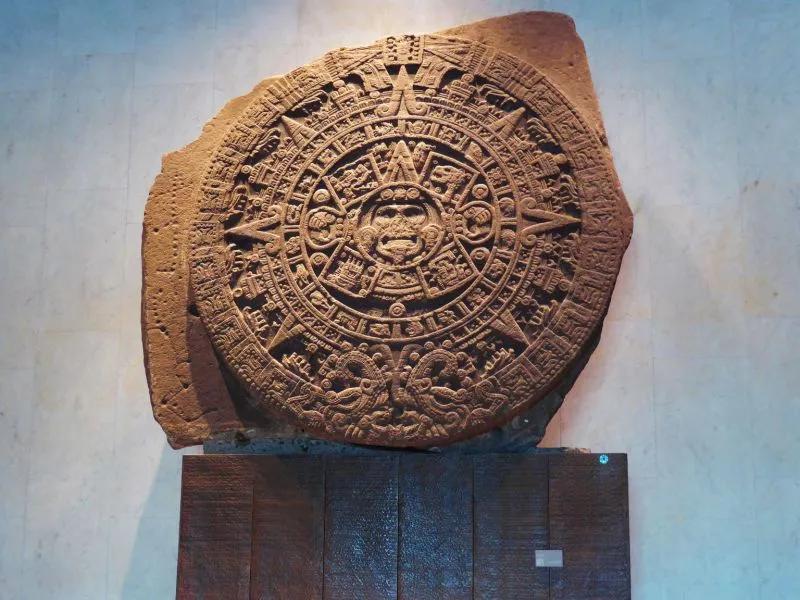1. Aztec Sunstone (Aztec Sunstone is the unquestioned treasure of the first town in Mexico, weighing 25 tons, 36 meters in diameter and 0.84 meters thick, and is a representative symbol of the Aztec civilization. The sun stone is made of peridot and is carved with very elaborate symbols and writings that record the totem worship and written calendar of the Aztec civilization. In the 16th century, the Spanish invaded Mexico, the Aztec temple was destroyed, and the sun stone was buried in the earth, and it was not seen until 1790)

2. Mayan sculpture (The Maya of three or four thousand years not only created a profound astronomical calendar and a clever mathematical system, they also constructed a grand urban building. In terms of art, the Maya made many exquisite sculptures, carving countless mysterious and changeable gods and monsters with rich imagination and creativity)
3. Ancient Mexican Murals (Images and Fertility Cults of Different Periods)
4. Teotihuacan three-legged flowerpot (Teotihuacan civilization is a splendid civilization in BC, the reason for its decline is unknown, the three-legged flowerpot is its iconic artifact)
5. Oaxaca Cup (a masterpiece of Paleo-Indian cultural heritage)
6. Two Fridas (Completed in 1939, this painting is a masterpiece by legendary artist Frida Carlo, who is widely regarded by Mexican culture as Mexico's most famous painter. Frida Carlo is known for his gripping and sometimes grotesque self-portraits, two fridas that have long been considered defining works in Mexican art culture)
7. Historical murals of Mexico (One of the most famous paintings in Mexico was done not on canvas, but as a mural on the large main staircase inside the National Palace in Mexico City, and its author is Rivera. Rivera is known for his works with historical settings, a painting called "History of Mexico" that began in 1929 and was finally completed in 1935. The painting began in the Aztec period and continued until The time Rivera painted it in present-day Mexico, where numerous scenes come together to construct a grand mexican history.)
8. Broken Pillar (Frida Kahlo's Broken Pillar is another of her famous self-portraits that evokes a meaning more important than superficial beauty.) Caro was involved in a serious bus accident in the summer of 1925, and she would live forever in the severe pain and constant damage caused by this devastating event. She had to endure more than 30 different surgeries to repair some of the damage caused by the accident and was unable to have children, which is said to have been a heavy burden for her since then)
9. Tres Personajes (the work of Rufino Tamayo, one of the most famous Mexican painters of modern times, which depicts a vibrant and colorful abstract expressionist scene, considered by many to be one of the greatest works of the country. The 1970 painting depicts three figures accentuated in dark red tones and outlined in darker colors. Contrasting colors and stark images work together to create a scene that truly has a Mexican character and is widely seen as proof of the country's culture)
10. Statue of our Lady of Guadalupe (Created in 1531 and now enshrined in the Chapel of Our Lady of Guadalupe in Mexico City. Our Lady of Guadalupe has become a national symbol of Mexico, making the cathedral the most visited Catholic pilgrimage site in the world)